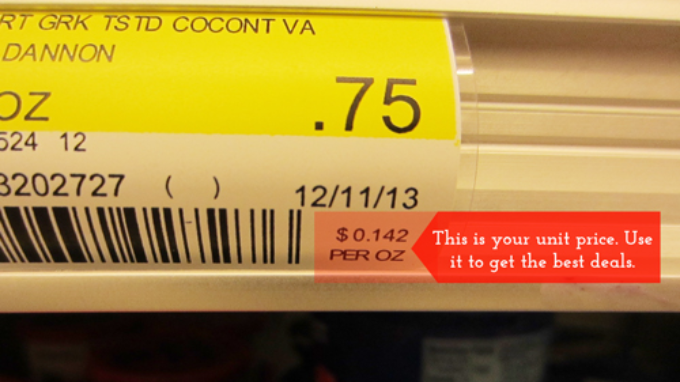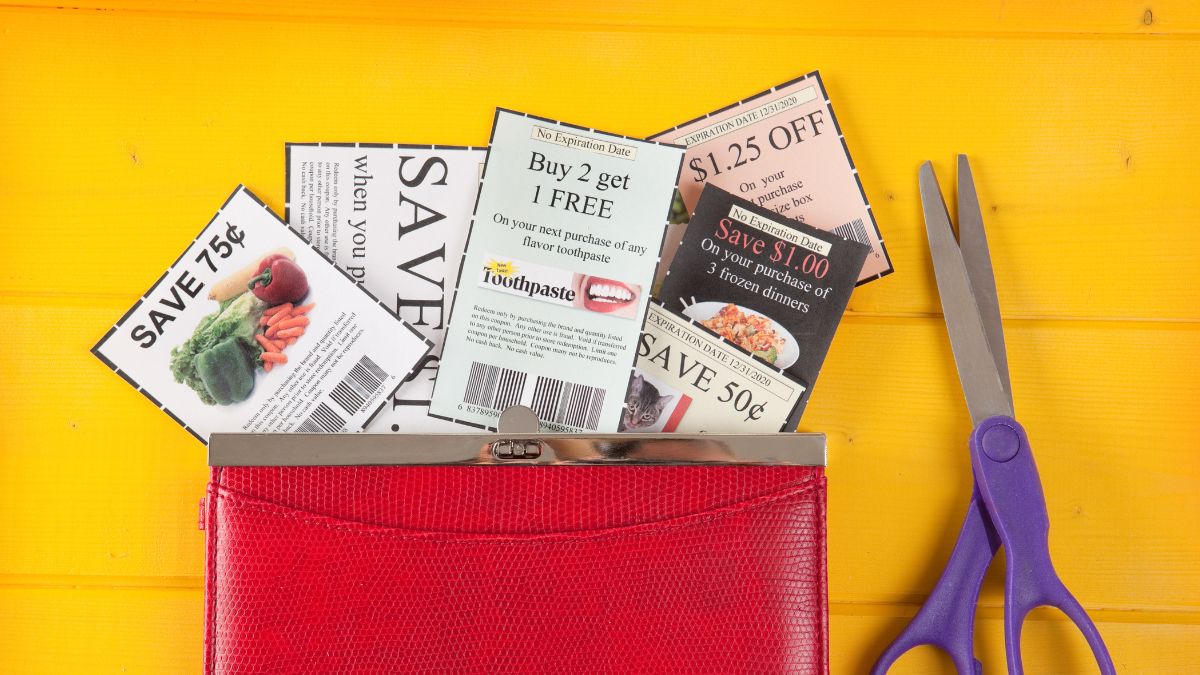As our family grew and our food habits changed for the better, I needed to look for ways to stretch our grocery budget and still eat well. Society taught me that coupons are the solution even though clipping always felt like a lot of work and time for little pay-off. In the end, I wound up with sugary, processed foods that derailed my nutritional goals.
I asked myself, “exactly what is couponing worth?” and came up with a little experiment: Collect a month’s worth of coupon inserts from the paper and allow one uninterrupted hour to sort and clip. My theory was that would give me a rough metric to gauge the value of money saved per hour of work.
The results were staggeringly poor. I clipped $11.25 in total coupons, but only $5.75 was for food. Most of the food coupons offered in the stack of inserts were for things like sugar-laden cereals, frozen convenience foods that we’re actively trying to avoid, or for brands that we don’t buy because there are less expensive alternatives, so I had to skip through all of the tempting treats to find the coupons we could actually use.
Finally, I took the coupons I found and tried to use them at the commissary but only wound up taking $3.25 worth to the cashier. In some cases, I found a less expensive brand that was cheaper than buying the brand with coupon. In others, the brand wasn’t available in the commissary.
Coupon marketers know this all too well. They spend much of their advertising dollars to get coupons out to the masses because they are proven to increase sales. In fact, one study tracked digital coupon users and learned that they spend 77% more – not less – on groceries than the average shopper.
Even though it never felt like I was making much progress before, after conducting my little experiment, I felt that I had proof that coupons were not the right answer for me to keep on the right nutritional track. Instead of coupons, I’m skipping the clip and using tactics that work well for my family.
Use seasonal produce
This seems like a no-brainer but I’ve had to retrain myself to plan meals around produce that’s available during the season. Not only are the fruits and vegetables fresher, they are much less expensive than their out-of-season counterparts that have had to travel from a different climate. InDependent Food Challenges always use seasonal produce and I’ve enjoyed drawing inspiration from the series. I’ve also had fun swapping out an out-of-season ingredient for a similar in-season fruit or vegetable. For instance, I love strawberries in my green salad but this winter, while fresh strawberries have been hovering at $5.99 a pint, I learned to love pomegranate seeds in their place.

Replace bagged salad for fresh lettuce
When the pre-washed, bagged salad mixes first came out, I was a fan. I could grab one on my way to work, dump it in a big bowl, add salad dressing and call it done. At about $3 per bag, all of that convenience really added up to a hefty lunch bill, over $15 a week. After experimenting with ways to make fresh lettuce easy to use, I finally found a great method to prewash and cut lettuce and I’ve never gone back to my bagged salad ways. It takes me about 15 minutes of active work per week to wash and dry the lettuce to store in the fridge, and the actual cost of the fresh lettuce per week is just over $4, saving about $11. Even after a week, it seems to hold up better than the bags of salad that always go slimy after a couple of days.
Compare the unit cost
One of my favorite money-saving tactics at the commissary is using the unit cost guide on the price stickers. A big box marked “value size” doesn’t always mean the best deal. This section of the price sticker tells you the exact price per pound, gallon, ounce, etc. Just like in the produce department, you are looking for the lowest price per unit to get the best deal. It’s easy to miss this important tool. At the commissary, the unit price is located at the bottom of the price sticker in tiny print.

Cheap sources of healthy proteins
We were big meat eaters in our house before I started trimming our grocery budget, but I started branching out into less expensive ways to get that protein boost. Now, we embrace the occasional vegetarian night at least once a week. I discovered that one bag of dried beans can stretch into a week of side dishes for our family for less than $2. We’ve also started using more ground beef (our commissary carries Laura’s antibiotic-free ground beef) in lieu of expensive steaks. Whole chickens, eggs, and canned tuna are very inexpensive sources of protein too.
Buy your favorites in bulk on sale
As you learn the prices of the items you use most, stock up when you find a good price on non-perishable items. While I find coupons to be tedious, I will always do a quick scan of what’s listed on sale at the commissaries.com “Digital Coupon” section. I can usually find one or two items that I use regularly at a deep discount. Not too long ago, I found the brand of brown rice my family likes the best for half of the usual low price listed at on the Savings Aisle so I bought five bags on my next trip.
What are your favorite frugal methods at the commissary?

